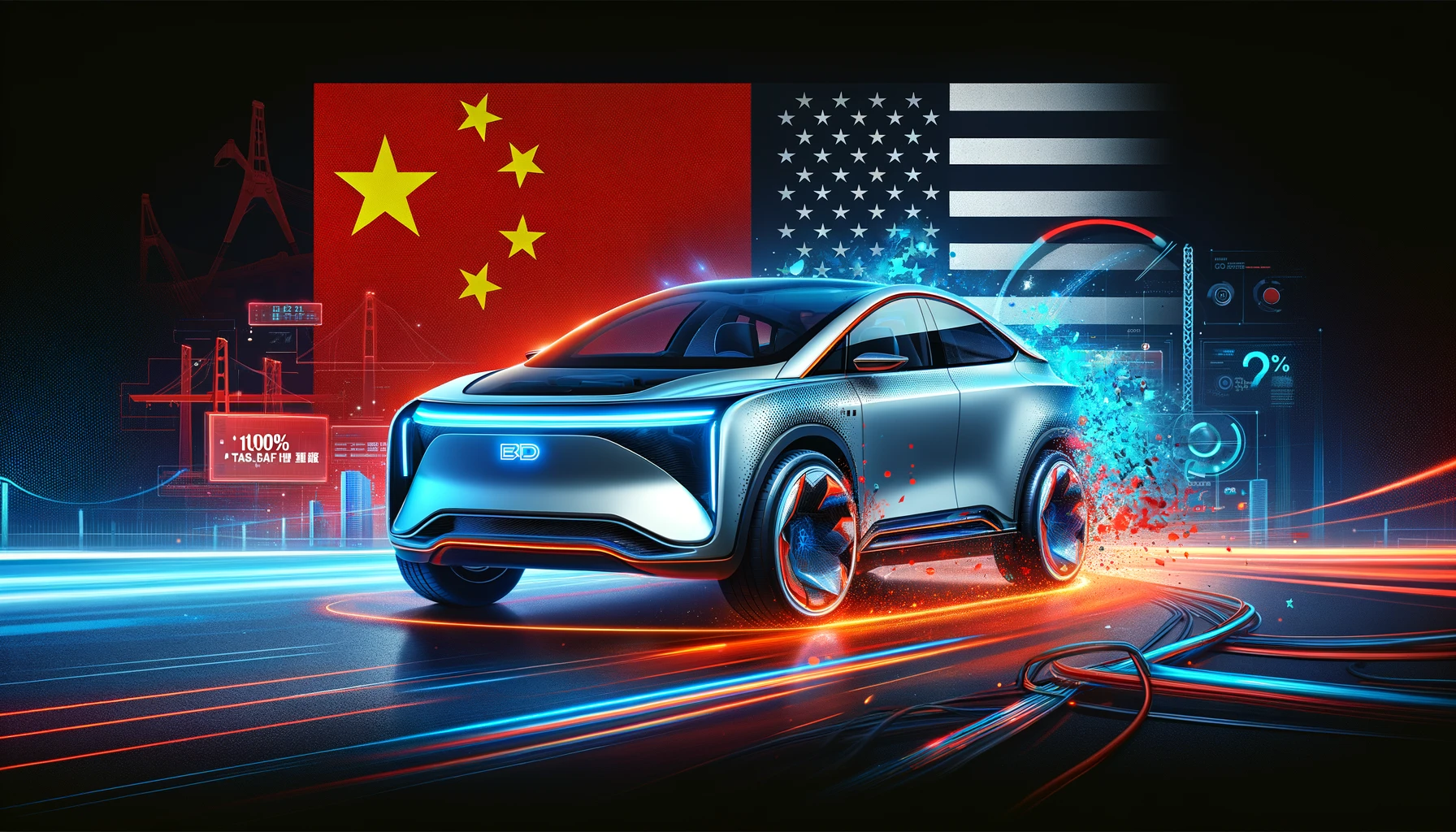How Chinese Electric Vehicles Are Shaping the US Market: A Deep Dive into BYD and Other Key Players
In recent years, the electric vehicle (EV) industry has experienced a seismic shift, with Chinese EVs emerging as a dominant force globally. Despite rising tensions and Biden’s 100% tariff on Chinese EVs, these vehicles are still gaining traction in the U.S. market. Why? Because Chinese electric vehicles remain cheaper than their U.S. competitors. In this article, we’ll explore how Chinese EVs, including those from brands like BYD, continue to challenge U.S. automakers despite the tariff hikes. We’ll also look at the broader implications of these tariffs on the EV battery supply chain and component imports.
The Rise of Chinese EVs in the U.S. Market
In 2023, Chinese electric vehicles accounted for a significant portion of the global EV market. Brands such as BYD and NIO have established themselves as pioneers, offering consumers affordable, high-performance options. These Chinese EVs have made headway in Europe and other regions, and now they’re making their mark in the U.S. market.
But what’s driving the popularity of Chinese electric cars in the USA? In short, it’s their cost advantage. Despite the introduction of the 100% tariff on Chinese EVs, these vehicles are still often cheaper than those produced domestically due to the relatively lower production costs in China.
One standout player is BYD, the world’s largest EV maker, which has rapidly expanded its market presence in North America. BYD’s electric vehicles, known for their high efficiency and competitive pricing, are posing a serious challenge to U.S. brands like Tesla and Ford. Although these companies have a strong foothold in the U.S., BYD electric cars in USA are beginning to capture the attention of consumers looking for more budget-friendly options without sacrificing quality.
Impact of Biden’s 100% Tariff on Chinese EVs
In an effort to bolster U.S. manufacturing and protect jobs, the Biden administration imposed a 100% tariff on Chinese EVs in 2024. This decision quadrupled the previous 25% tariff, aiming to reduce America’s dependence on Chinese imports and encourage local production. According to the Office of the United States Trade Representative (USTR), this Biden EV tariff primarily targets Chinese electric cars and components, such as EV batteries and critical minerals needed for vehicle assembly(CBT News).
However, these tariffs on Chinese EVs have led to a series of unintended consequences. While the tariffs were meant to make U.S.-made electric vehicles more competitive, many consumers are still drawn to Chinese EVs due to their cost advantages. This is largely because Chinese automakers benefit from government subsidies and lower labor costs, allowing them to offer cheaper EVs even with the added tariffs.
What Are the Tariffs Covering?
The Biden administration tariffs on EVs don’t just cover finished vehicles; they extend to components crucial for EV production. The USTR has imposed additional tariffs on key materials such as lithium-ion batteries and EV minerals. These tariffs, set at 25%, are expected to impact not only imports of Chinese EVs but also the U.S. EV supply chain, making it more expensive for domestic manufacturers to source these critical materials.
According to reports, the tariffs on EV batteries are already having a ripple effect on the broader industry, increasing production costs and leading to potential delays in EV adoption across the country(KUNR).
U.S. vs. Chinese EVs: Price Wars Amid Tariffs
One of the primary reasons Chinese electric vehicles remain competitive in the U.S. market despite the 100% tariff is the significant price difference between Chinese and U.S. EVs. On average, Chinese electric cars can be priced 20% to 30% lower than their American counterparts due to China’s ability to mass-produce EVs more cheaply. Even with electric vehicle import tariffs, Chinese companies have managed to keep costs down.
Additionally, Chinese EV manufacturers are continuously innovating to improve performance while keeping prices low. Brands like NIO, XPeng, and BYD have made strides in battery technology, allowing them to extend vehicle range and reduce charging times. These advancements further entice American consumers to look beyond domestic options, especially when price remains a top concern.
The Tariff Impact on the U.S. EV Battery Supply Chain
Tariffs on Chinese EV batteries and other key components could have long-lasting effects on the U.S. EV market. For years, the U.S. has been reliant on China for critical EV materials like lithium-ion batteries, which power most electric cars. The EV battery tariffs are expected to disrupt this supply chain, potentially leading to higher costs for American automakers and slower growth in the U.S. EV industry.
This disruption highlights the need for the U.S. to diversify its EV supply chain. While the tariffs aim to reduce reliance on Chinese imports, they could also push U.S. manufacturers to look for alternative sources of EV batteries and components. Some companies have already begun exploring partnerships with suppliers in Europe, South Korea, and Japan to mitigate the impact of these tariffs(Carnegie Peace).
Can Domestic EV Manufacturers Compete?
The question remains: Can U.S. automakers truly compete with Chinese electric vehicles, given the significant price and production advantages? While companies like Tesla and Rivian have strong brand recognition and a loyal customer base, they face increasing pressure from Chinese EVs that offer competitive technology at lower prices.
To level the playing field, domestic automakers may need to focus on reducing production costs and enhancing their supply chains. For example, Tesla has been working on a more affordable $25,000 electric vehicle, which could rival Chinese electric cars in the budget-friendly segment. However, until such vehicles hit the market, U.S. automakers may continue to struggle with the price gap, especially with the added cost of tariffs on Chinese EV batteries(Electrek).
The Future of Chinese Electric Vehicles in the U.S.
Despite the challenges posed by Biden’s 100% tariff on Chinese EVs, it’s clear that Chinese automakers aren’t backing down. Brands like BYD and NIO are continuing to innovate and expand globally, making it difficult for U.S. manufacturers to dominate the EV market entirely. As Chinese electric cars in the USA become more prevalent, we can expect the competition to intensify.
The future will likely see more Chinese electric vehicles entering the U.S. market, even if it means setting up factories abroad to circumvent tariffs. Companies like BYD are already considering building production plants in Mexico, allowing them to avoid U.S. tariffs while still catering to the American market(KUNR).
A New Era for Electric Vehicles
The landscape of the U.S. electric vehicle market is rapidly evolving, with Chinese EVs playing an increasingly important role. Despite the hefty Biden EV tariffs, Chinese electric cars continue to offer a competitive edge in terms of pricing and technology. As the battle between Chinese and U.S. automakers heats up, it remains to be seen how both sides will adapt to the changing landscape.
For consumers, the choice between Chinese electric vehicles and domestic options will largely come down to cost and availability. With innovations from brands like BYD and NIO, it’s clear that Chinese EVs are here to stay.



